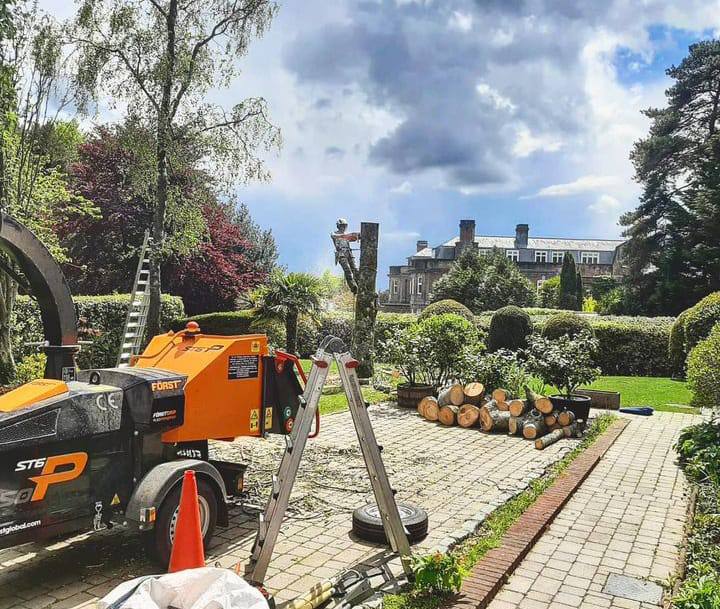How Often Should You Reduce the Crown of a Tree?
Crown reduction is one of the most common and effective tree surgery practices used to maintain tree health, safety, and shape. It involves selectively trimming the upper branches of a tree to reduce its overall height or spread, without damaging its structure or vitality. However, one of the most frequent questions homeowners ask is: how often should crown reduction be carried out? The answer depends on a variety of factors, including the species, age, condition, and growing environment of the tree. At Long Eaton Tree Surgeons, we’ve helped property owners across Long Eaton, Nottingham manage their trees responsibly, ensuring that every crown reduction is timed and performed to promote long-term growth and safety.
Understanding Crown Reduction
Crown reduction is not simply about cutting a tree down to size. It’s a precise, skilled operation that requires an understanding of the tree’s natural growth pattern, structure, and response to pruning. The aim is to remove the upper and outer sections of the canopy to reduce its overall mass and wind resistance, while maintaining the natural form of the tree.
Key benefits include:
- Improved structural integrity by reducing the strain on heavy limbs.
- Enhanced light penetration to gardens, lawns, and nearby plants.
- Reduced wind load, lowering the risk of branch failure or storm damage.
- Improved clearance from buildings, roads, and power lines.
- Better health and appearance, as dead or overcrowded branches are removed.
When carried out by professionals such as Long Eaton Tree Surgeons, crown reduction can extend the life of a tree while ensuring it remains both attractive and safe.
How Often Should Crown Reduction Be Done?
The frequency of crown reduction varies greatly between tree species and individual circumstances. On average, most trees benefit from crown reduction every 3 to 5 years, but this can range from more frequent trimming for fast-growing species to less frequent work for mature, slow-growing trees.
Factors That Affect the Timing
1. Tree Species
Different trees grow at different rates. For example:
- Fast-growing species like willows, poplars, or sycamores may need reduction every 2–3 years.
- Medium-growth trees such as maples or ash typically require maintenance every 3–5 years.
- Slow-growing or mature trees like oaks or beeches may only need attention once every 6–10 years.
Understanding the specific growth rate of your tree helps determine an appropriate maintenance schedule.
2. Tree Age and Health
Younger trees recover more quickly from pruning, allowing slightly more frequent reductions. Mature trees, however, should be reduced with greater care and less regularity to avoid unnecessary stress. If a tree is showing signs of decay or disease, a professional assessment is vital before any work is carried out to ensure it can withstand pruning safely.
3. Location and Environmental Factors
Trees in urban or exposed environments, such as those near roads, buildings, or open fields, often require more regular crown reduction. Exposure to high winds or limited root space can increase the risk of instability, making periodic reduction an important safety measure.
4. Purpose of the Reduction
The reason for crown reduction also influences frequency:
- Safety-related reductions (for weak or overextended limbs) may require shorter intervals.
- Aesthetic or shape maintenance pruning can often follow a longer cycle.
- Light improvement or clearance work might only be needed occasionally, depending on surrounding growth.
Signs That a Tree May Need Crown Reduction
Even with regular maintenance, certain signs indicate when crown reduction should be considered sooner rather than later. Look out for:
- Branches overhanging roofs, roads, or power lines.
- Uneven canopy shape or excessively heavy limbs.
- Dead, diseased, or crossing branches.
- Visible cracks or splits where large limbs meet the trunk.
- Reduced light levels or shading in your garden.
If you notice any of these issues, it’s best to arrange a professional inspection from Long Eaton Tree Surgeons. Prompt attention prevents potential hazards while keeping your tree in optimal condition.
The Importance of Professional Crown Reduction
Crown reduction is a specialist task that requires precision and an understanding of arboriculture. Over-pruning can cause lasting damage, leading to poor regrowth, decay, or structural weakness. Professional tree surgeons use selective techniques to remove only the necessary branches, cutting back to suitable growth points while maintaining the tree’s natural form.
At Long Eaton Tree Surgeons, we follow best-practice methods for every crown reduction project in Long Eaton and across Nottingham. Our approach focuses on:
- Maintaining the health of the tree’s vascular system.
- Preserving balance and shape to prevent uneven stress.
- Ensuring all cuts are clean, controlled, and correctly positioned.
- Adhering to recommended reduction limits, typically no more than 20–30% of the crown.
This careful attention ensures that the tree remains stable, healthy, and attractive after pruning.
Why Regular Reduction Benefits Your Property
Keeping up with a proper crown reduction schedule does more than maintain tree health — it also protects your property and enhances its surroundings.
Key advantages include:
- Safety: Reduces the risk of falling branches during storms.
- Sunlight: Allows more natural light into gardens and nearby structures.
- Space: Prevents overhanging branches from encroaching on roofs, windows, and boundaries.
- Aesthetics: Keeps your landscape neat and well-maintained.
- Longevity: Promotes healthy regrowth, extending the tree’s lifespan.
Regular maintenance is a form of preventive care that saves homeowners from future complications such as property damage, blocked gutters, or sudden tree failures.
Seasonal Considerations for Crown Reduction
While crown reduction can be carried out at various times of year, the best period is typically late winter to early spring, before new growth begins. This timing minimises stress on the tree and allows it to heal efficiently once the growing season starts.
However, certain species may respond better to summer pruning, especially those prone to bleeding sap such as birch or maple. The experts at Long Eaton Tree Surgeons assess each tree individually to determine the most appropriate time for work, ensuring long-term vitality and recovery.
How to Create a Long-Term Maintenance Plan
To keep trees healthy and manageable, a structured care plan is essential. This includes:
- Initial assessment: To evaluate the tree’s size, species, and condition.
- Scheduling regular inspections: Every few years, even if no immediate work is needed.
- Recording maintenance: Keeping track of previous pruning dates and the tree’s response.
- Adapting care frequency: Based on growth patterns, weather events, or new developments nearby.
With professional oversight from Long Eaton Tree Surgeons, your trees can thrive safely and beautifully for decades.
Conclusion
Crown reduction is a key element of responsible tree care, balancing health, appearance, and safety. While most trees benefit from reduction every few years, the ideal frequency depends on species, age, and environmental factors. By monitoring your trees and seeking professional advice from Long Eaton Tree Surgeons, you can ensure they continue to grow strong, stable, and visually appealing. For property owners in Long Eaton and throughout Nottingham, timely crown reduction is an investment in both the landscape and the longevity of every tree.
Call us on: 0115 647 3811
Click here to find out more about Long Eaton Tree Surgeons
Click here to complete our contact form and see how we can help with your trees needs.

